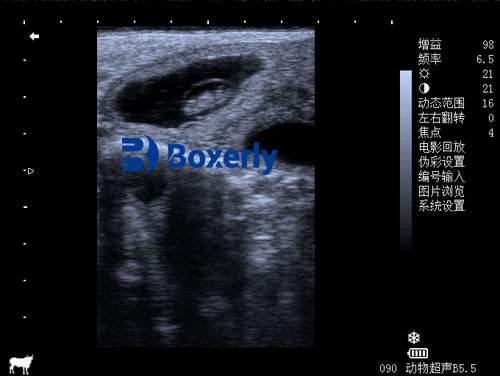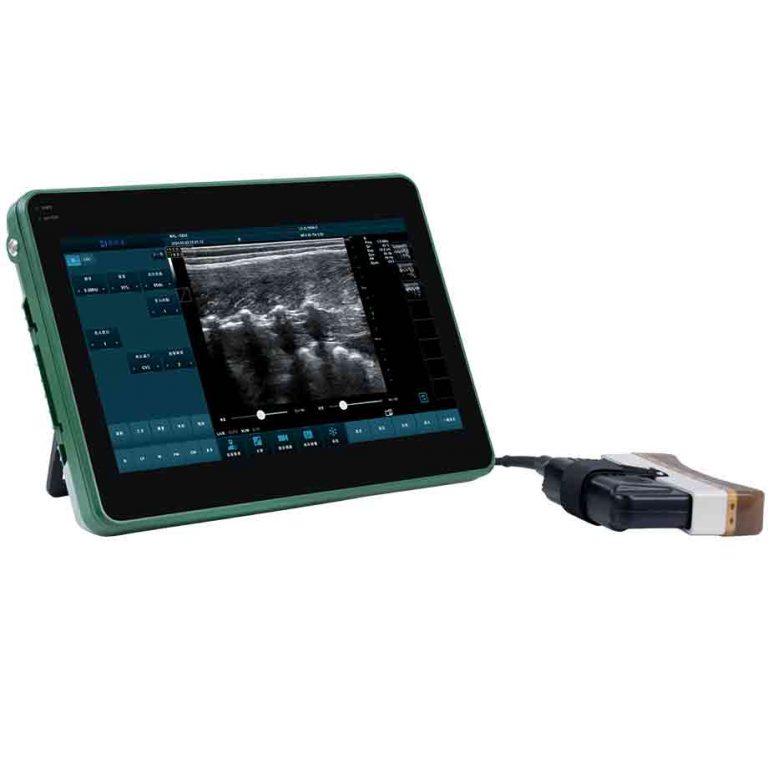Ultrasound Imaging: A Key Tool in Veterinary Medicine
In modern veterinary medicine, ultrasound imaging has become an indispensable diagnostic tool, revolutionizing the way veterinarians assess and monitor the health of animals. While ultrasound is commonly associated with human medicine, its application in veterinary care has proven to be equally valuable, especially in large animals such as cattle, horses, and sheep. This non-invasive technology allows for real-time, high-resolution images of internal organs and structures, aiding in accurate diagnoses and treatment planning.

The Role of Ultrasound in Veterinary Medicine
Ultrasound is a versatile diagnostic tool used by veterinarians to evaluate the health of internal organs, detect abnormalities, and guide procedures such as biopsies or fluid sampling. It utilizes high-frequency sound waves to create detailed images of the inside of an animal’s body without the need for surgery. This makes it particularly useful for assessing the health of organs like the heart, liver, kidneys, and reproductive organs, as well as detecting tumors or injuries.
For large animals, ultrasound is especially useful for monitoring the reproductive health of cows and horses. In cattle, ultrasound is frequently used to evaluate pregnancy status, detect early signs of fetal development, and even determine the sex of the calf. Similarly, for horses, veterinarians use ultrasound to monitor the health of the uterus and ovaries, ensuring optimal breeding conditions and preventing complications during pregnancy.

In addition to reproductive health, ultrasound is also employed to assess musculoskeletal injuries, such as ligament and tendon damage, which are common in working animals like horses. Ultrasound can identify the exact location and extent of soft tissue injuries, helping veterinarians develop tailored treatment plans for faster recovery and improved performance.
Advantages of Ultrasound Imaging in Large Animal Veterinary Care
Ultrasound offers several advantages over other imaging techniques, such as X-rays or CT scans, especially when it comes to large animals. One of the primary benefits of ultrasound is its ability to visualize soft tissues, which cannot be captured effectively using traditional X-ray imaging. This makes ultrasound particularly valuable for detecting issues in organs, muscles, and other soft tissues that are not visible on X-rays.
Another significant advantage is the non-invasive nature of ultrasound. Since no incisions or injections are required, the procedure is relatively stress-free for the animal. This is particularly important when working with large animals, which may have a heightened stress response to invasive procedures. Ultrasound is also a safe procedure with no known long-term health risks, making it an ideal choice for routine examinations.
Additionally, ultrasound imaging provides real-time feedback, allowing veterinarians to make immediate decisions about treatment or further diagnostics. This feature is especially useful in emergency situations, such as when a horse is injured or a cow is exhibiting signs of distress.

Challenges and Limitations of Ultrasound in Veterinary Medicine
While ultrasound is an incredibly valuable tool, it is not without its limitations. One of the main challenges is the difficulty in obtaining clear images for animals with thick fur or heavy skin, which can impede the transmission of sound waves. For this reason, it is crucial for veterinarians to have access to high-quality ultrasound equipment designed for large animals, as it ensures the clarity and accuracy of the images.
Furthermore, the skill and experience of the veterinarian performing the ultrasound play a critical role in the quality of the results. Unlike X-rays, which can be interpreted by anyone with basic training, ultrasound requires specialized knowledge and expertise to understand the images and make accurate diagnoses. This means that veterinarians must undergo extensive training to become proficient in ultrasound technology.
Another limitation is that ultrasound may not always be suitable for certain conditions, such as those involving the bones or areas deep within the body. While ultrasound excels at imaging soft tissues, it cannot penetrate bone, making it less effective for diagnosing skeletal problems or evaluating conditions that affect deep internal organs.
The Future of Ultrasound in Veterinary Medicine
Despite its limitations, the future of ultrasound in veterinary medicine is promising. Advances in technology are constantly improving the resolution and portability of ultrasound machines, making them more accessible to veterinarians in both private practices and fieldwork settings. For example, portable ultrasound units have become increasingly common, allowing veterinarians to perform on-site evaluations without the need for transporting animals to a clinic. This is especially beneficial for large animal practitioners who work with livestock or horses in remote locations.
Moreover, the development of more advanced imaging software is helping veterinarians interpret ultrasound images more accurately and quickly. Machine learning algorithms are being integrated into ultrasound systems to assist in identifying potential health issues, which will likely lead to even better diagnostic capabilities in the near future.
Veterinary ultrasound equipment manufacturers, such as BXL, are continuously improving their products to meet the growing demands of large animal care. These companies are focused on designing ultrasound machines with better resolution, durability, and ease of use, ensuring that veterinarians can provide the best care possible to their animal patients.
Conclusion
In conclusion, ultrasound imaging is a vital tool in the field of veterinary medicine, particularly for the care of large animals. It provides invaluable insights into the health of animals, aiding in early detection of problems and ensuring the well-being of both livestock and companion animals. While challenges remain, technological advancements continue to enhance the capabilities of ultrasound, ensuring that it remains a key tool for veterinarians in the years to come.





